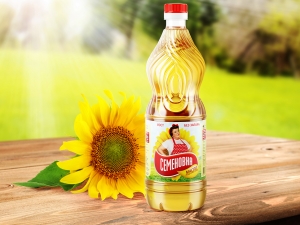Calorie vegetable oil

Now it is difficult to imagine the human diet, which would not include vegetable oils.Next will be discussed KBRU of this product, as well as its benefits and harm to the body.
Chemical composition and nutritional value
In terms of BZHU, 100 grams of a product contains:
- 0 g protein;
- 99.9 grams of fat;
- 0 grams of carbohydrates.
This product is also rich in vitamins such as E, D, F, A. Fatty acid composition includes oleic, stearic, palmitic and other fatty acids. As for minerals, vegetable oil contains phosphorus, sodium, calcium, potassium and magnesium. In addition to all of the above, the product contains phytin, lecithin, inulin, tannins. The composition of vegetable oils is well illustrated by the following table.
It is important to note the importance of vitamin F for the human body, since it cannot be replaced by anything else. In this regard, it is the most essential vitamin for humans.
Glycemic index
The glycemic index is an indicator of the rate at which the glucose level in the body rises after taking one or another product. This index especially needs to be taken into account by diabetics.
At the moment, a huge selection of vegetable oils is available to the consumer, among which the most famous are: sunflower, olive, sea buckthorn, corn, flaxseed. Important in this case is that these products do not contain carbohydrates, therefore, do not have a glycemic index.
Calorie content
Vegetable oils have a high calorie count. The energy value of 100 grams of vegetable oil is 899 calories, one teaspoon of vegetable oil is 44.9 kcal, and one tablespoon of the product contains 107 kcal, a liter of vegetable oil contains 1654 calories. It is important to note that refined and unrefined vegetable oils do not differ from each other in terms of calorie content.
Daily rate of use
Nutritionists note that no more than 25 grams of vegetable oil should be consumed per day, which corresponds to 1-2 tablespoons. In addition, doctors note that for 1 serving of a hot dish the amount of vegetable oil should not exceed 6–7 grams.
Exceeding the above standards is not worth it because of the huge caloric content, since the fat content of the product is extremely high. Eating too much vegetable oil can have a negative effect on your body shape and health.
More use for the body will bring eating unrefined oil in its raw form.
List of low-calorie oils
- Flaxseed It ranks first in the list due to the fact that it is the most low-calorie. Among the useful properties of the product can be noted excellent neutralization of nitrates, help in the removal of harmful substances from the liver. Also, flaxseed oil is a good source of omega-3.
- Olive In the case of this oil, attention should be paid to its acidity, which can be seen on the label. The fact is that the lower it is, the higher the quality of the product. In this oil, the largest amount of oleic acid, and when heated, it almost does not form carcinogens.
- Corn. It controls cholesterol metabolism better than others, it breaks down solid fats, brings great benefits to the brain, and also regulates cardiac conduction.
- Sunflower. Its feature is the high content of lecithin, which has a positive effect on the formation of the nervous system of children and supports mental abilities in adults.
- Mustard It has excellent bactericidal properties. Oil is suitable for inhalation, as it warms well. They can also be treated with various burns and wounds. But it should not be often consumed because of the content in it of elements that are poorly broken down in the human body.
- Pumpkin. It is the best source of zinc, which in turn helps in the production of testosterone. It is useful to use in the cold season due to the fact that it contains selenium, which improves immunity and adversely affects microbes.
- Sesame. Contains the greatest amount of calcium. Doctors recommend to use it during pregnancy, hormonal problems, thyroid disease, gout. Due to the fact that sesame increases clotting, people with heart problems and varicose veins should use this product with great care.
How to choose vegetable oil, see the video below.




























